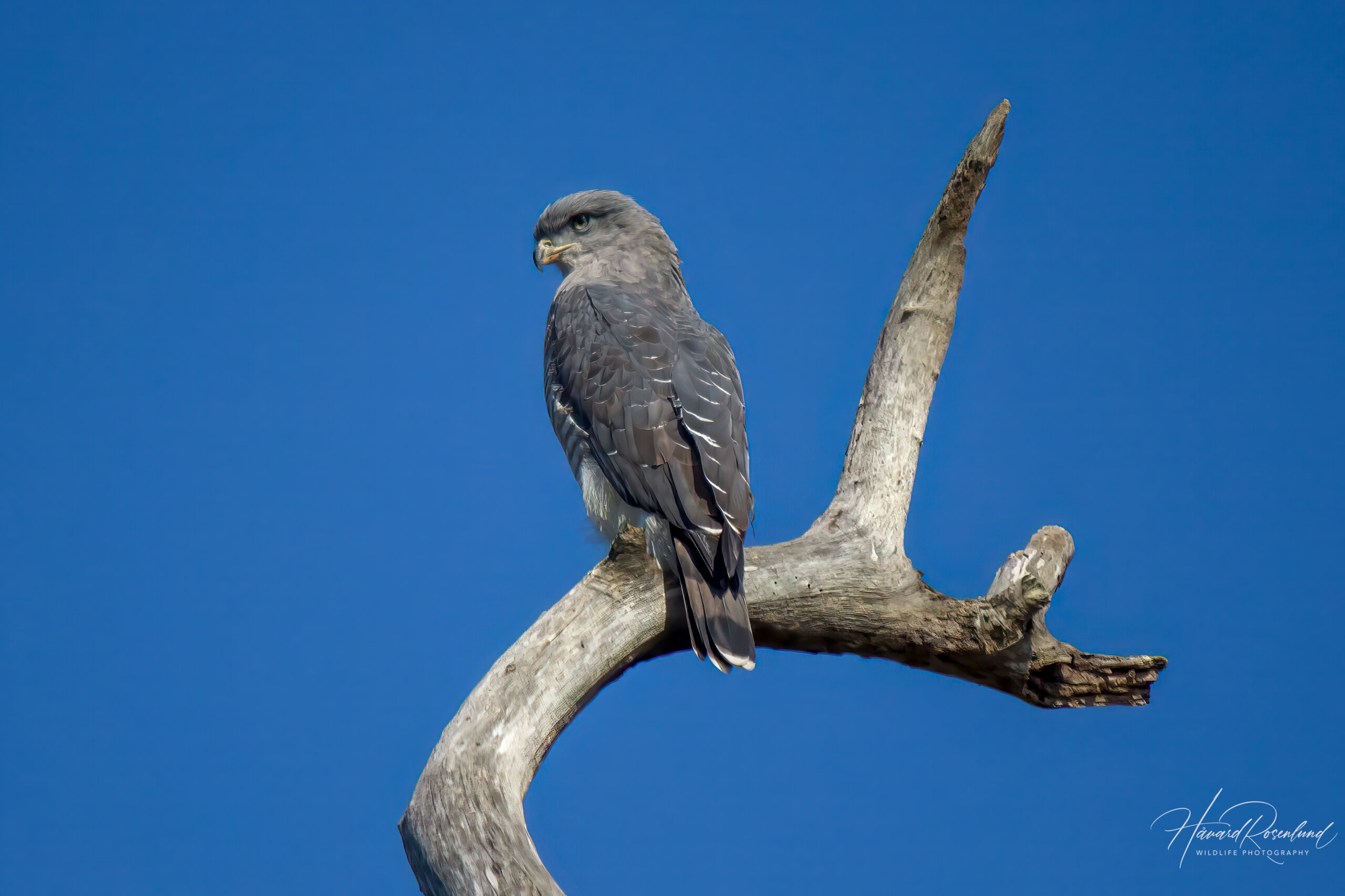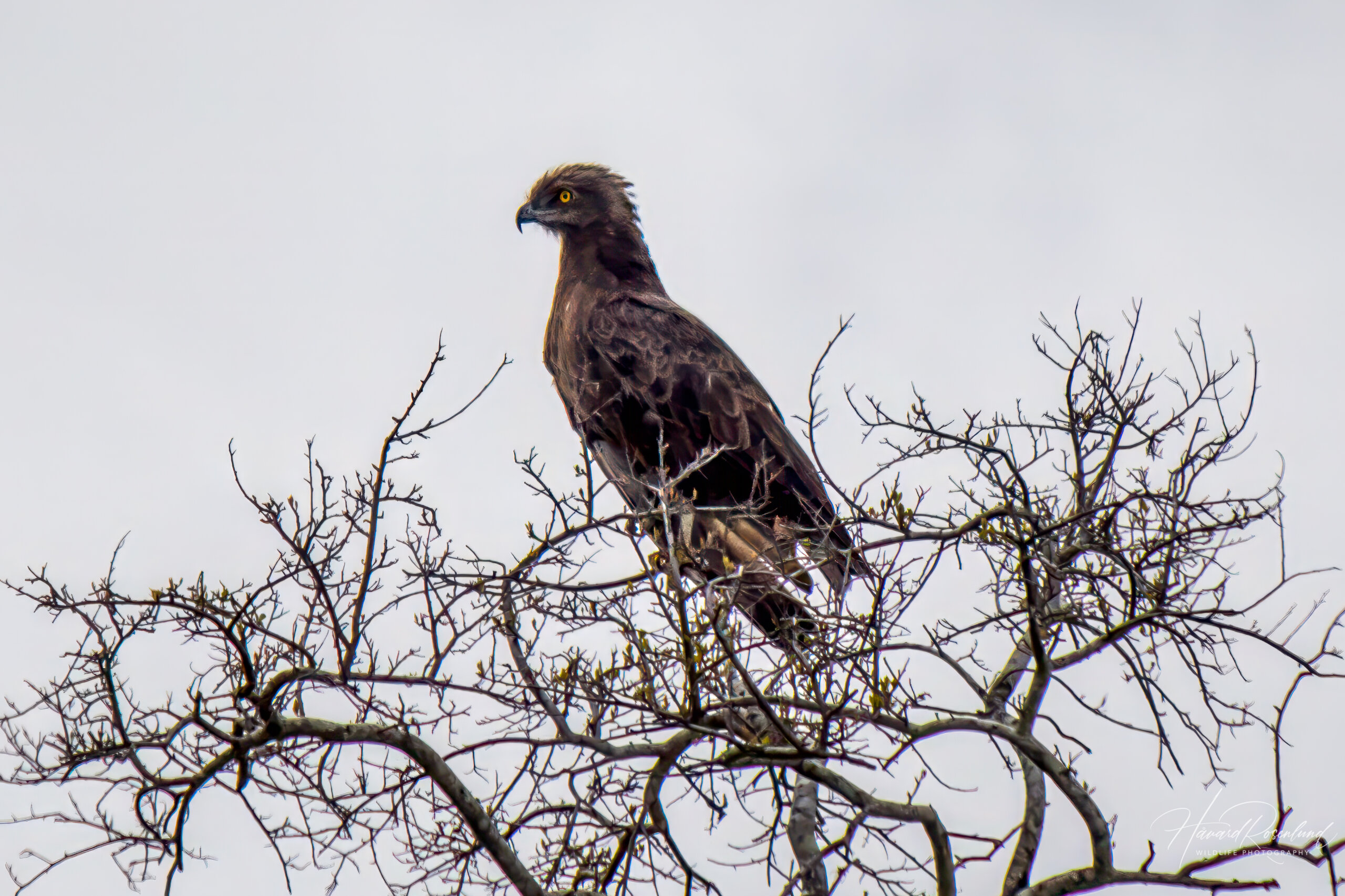Southern Banded Snake-Eagle
(Circaetus fasciolatus)
Description
The southern banded snake-eagle or fasciated snake-eagle (Circaetus fasciolatus) is a small species of bird of prey occurring along the east coast of sub-Saharan Africa. It reaches lengths of 55-60 cm (21.5-23.5 in). It is all over grey to grey-brown in appearance, with thick feathers protruding from the head and down the neck giving it a slightly unique appearance. Head is lighter grey to greyish-brown whereas the upperparts and wings are markedly darker. The most telltale feature is its heavily banded underparts of grey-brown bands on white, which is suddenly interrupted by the uniformly greyish-brown chest. Eyes are white to pale yellow, beak is yellow with a black tip, and legs are yellow as well. In flight the wings are heavily streaked, and the bands from the underparts extends onto the wing coverts. Tail is banded light grey and dark grey and ends with a white tip.
Diet & habitat
The southern banded snake-eagle prefers evergreen, riverine, and dense coastal forests, and will only occasionally venture out into more open habitat. It spends a lot of time perched underneath the canopy which makes it hard to spot. It is a very secretive bird and is not often seen. When hunting, it scans the ground for prey from a perch. Upon spotting its prey, it will swoop down and attempt to catch it. As with other snake-eagles, the main diet is snakes, but it will also catch lizards, frogs, large beetles, mice, and sometimes chicken.
Nesting
The southern banded snake-eagle is monogamous and territorial, and the nest is built by both parents. The nest is built by twigs and sticks, is around 50-70 cm wide, and is most often situated in the main fork of a tree. The female will normally only lay one egg, which she incubates for about 49-51 days. The male may take some part in the incubation early in the process. Both parents will feed the chick after hatching, but the female will stay at nest during the first few days while the male hunts.
Status
The southern banded snake-eagle is an uncommon species, and in South Africa only 40-50 pairs are thought to occur. Because it is a rare species, a decline in numbers across its range is difficult to assess. It is experiencing an increase in loss of preferred habitat along the coast due to deforestation and a growing human population. Numbers are more than likely declining. It is listed as near threatened on IUCN Red List.






